The stucture of tasks in a GameBook
Game tasks should come as a challenge to players. If they are too easy, players will quickly lose their interest. If tasks are too difficult, players will feel frustrated and they will quit the game. Therefore, the best scheme to apply in a game is: players acquire new skills and test them. If the test ends with a success, the level of difficulty can be increased.
Example: In the Snake game, players move a snake on a board in order to collect food and to avoid eating its own body or hitting the wall. By collecting food, the snake is getting longer and longer; as a result, the level of difficulty increases. In the course of time the snake moves faster and faster. As a result, the level of difficulty is increased once again.
While developing your game, do not forget about its education value. Offer players an opportunity to acquire knowledge about the history of the district, about its inhabitants and about modern challenges they have to face. Based on original archive materials, introduce some interesting facts and local history to your game.
As GameBook developers, give your players a series of choices. It should depend on players’ decisions whether they achieve the intended results and win the game or fail to do it. Players’ choices must bring about very specific and measurable results which affect the course of the plot.
It is important for players to have a possibility to make their own choices based on previously obtained information or acquired skills. They cannot rely exclusively on luck. Properly structured choices allow players to assess their situation and to take action which will be adjusted to the selected strategy.
What choice should be avoided:
A choice based exclusively on luck
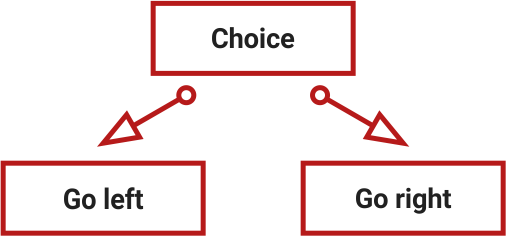
If this kind of choice is applied too often, players will feel frustrated with their lack of influence on the course of the game.
A choice which is too obvious
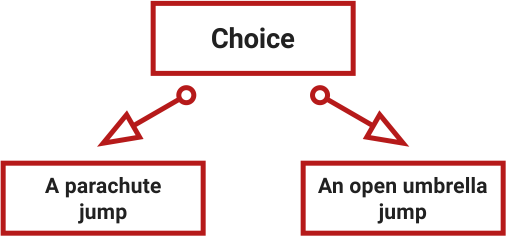
Such a clear example indicates that the result of choosing an umbrella is pretty obvious. Players know that if they choose the umbrella they will die.
A choice which does not affect the course of the game
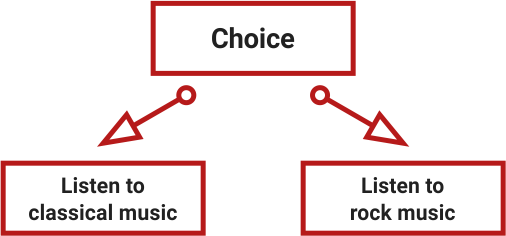
As game developers, you will have to do your best to think about the results of such a choice, which could be significant for players.
The results of choices should meet players’ expectations
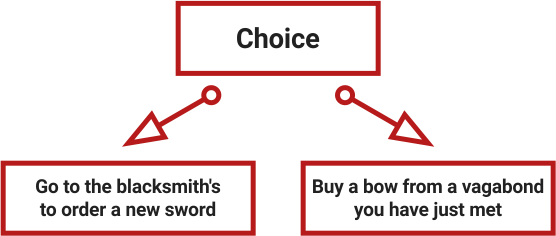
Let’s assume that a player chooses a sword, goes to the blacksmith’s and then it turns out that instead of a forge, the player finds a fabric store. Such a result does not make any sense. In such a way players may only become discouraged from playing.
Examples of well-structured choices:
A choice which is based on information gained by players or on observation made by players
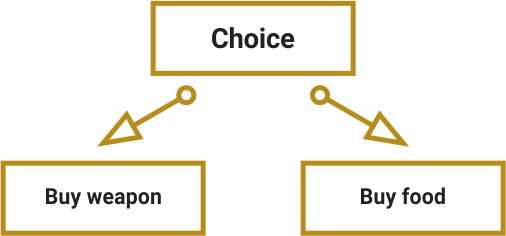
The characters know that they can face some danger on their way and they have to be ready for that. They know their food supply status. In this case, both purchases can be advantageous and they can be useful. Based on that information, the characters can make decisions which are best for them.
A tactical choice which is based on players’ previous decisions
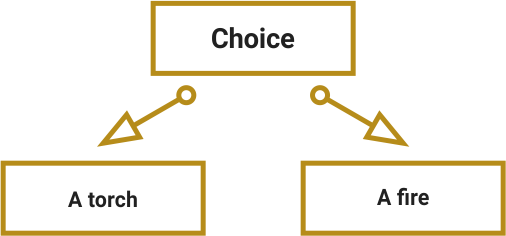
The characters know that they need light. They can use a torch which they can carry around or they can light a fire which will give more light but which cannot be taken any further to some other place. Based on that information, the characters can make their decisions.
A choice based on risk
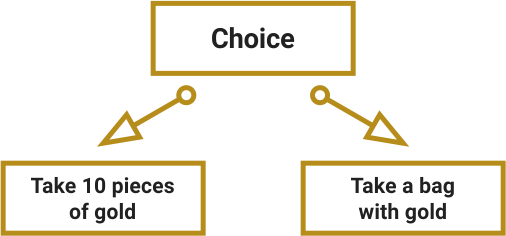
Players do not know how much gold is in the sack and if they wish, they can take the risk. In this case, the randomness element is applied properly. Players realise that if they choose uncertainty and they get less gold, they may have more luck next time.
A moral choice
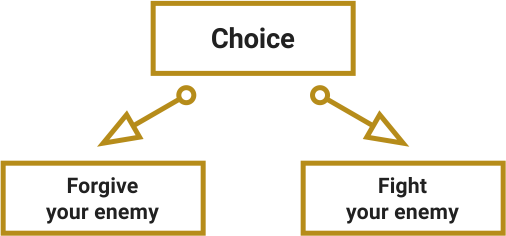
This is an example of an important decision which can significantly affect the further course of the plot. This kind of choice reinforces players’ sense of empowerment.
A strategical choice
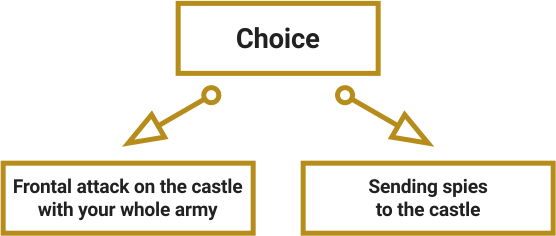
The result of the first choice is a fast conquest of the castle, however with a great loss in people. The second choice results in a small loss but players need to wait for a long time before the castle is taken and its defence system is destroyed from the inside. Players can choose their own strategy.
